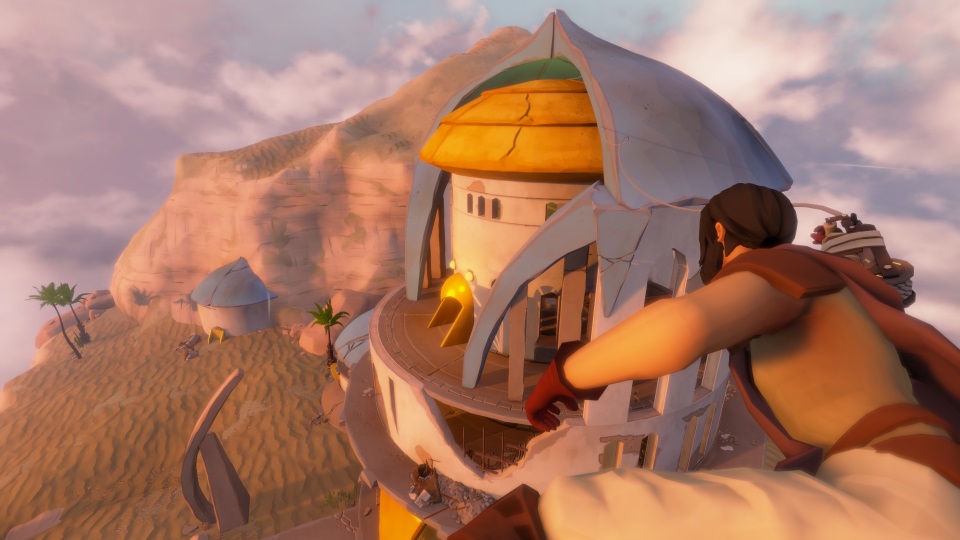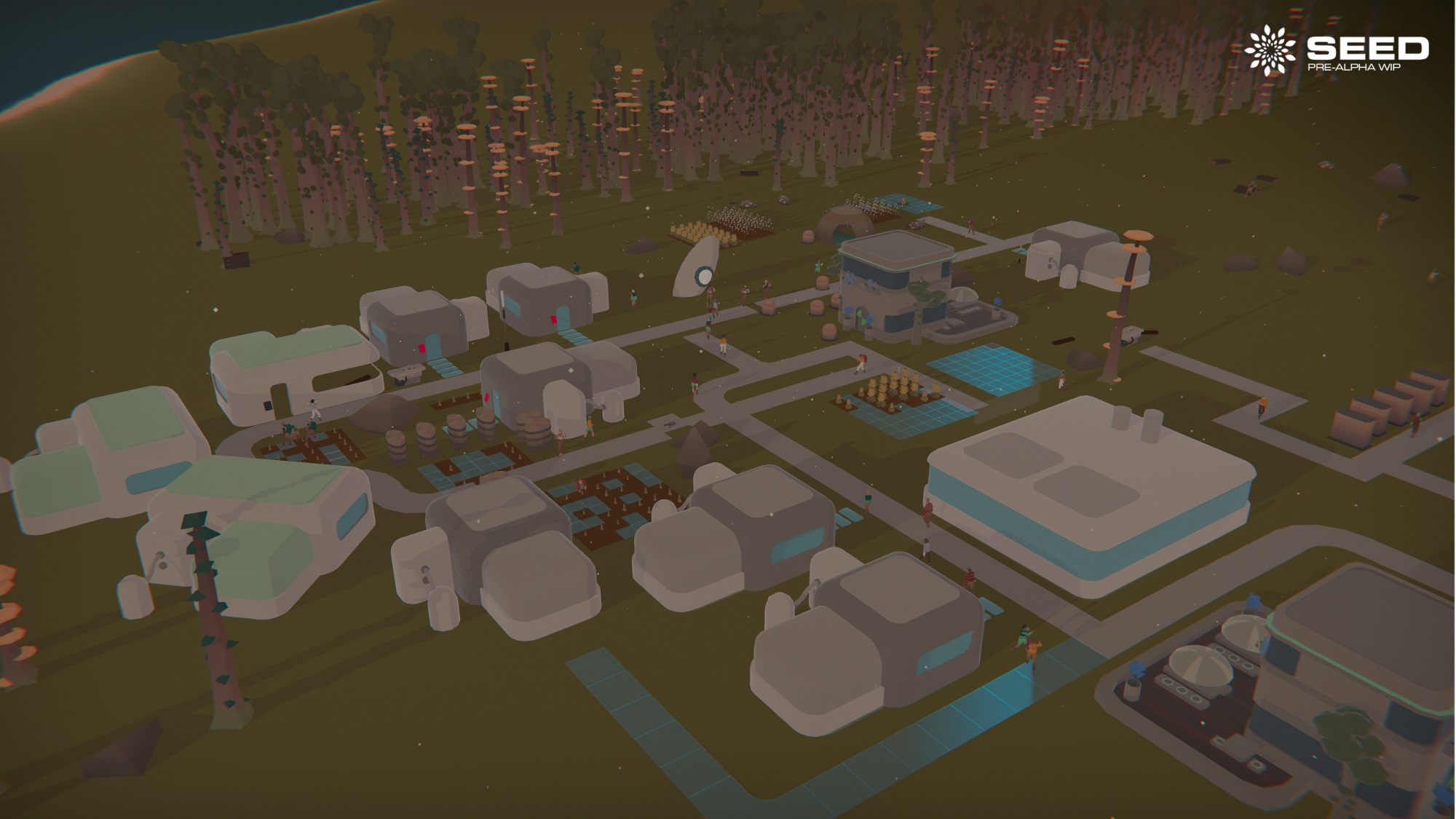
SpatialOS: You’ve probably been seeing this name pop up more and more in the MMO sphere. Worlds Adrift, Mavericks, Fractured, Seed, MetaWorld, and Identity are just some of the titles we’ve mentioned that have sprung up to use Improbable’s platform. The company picked up more than half a billion dollars from Japanese company SoftBank, roped in MMO veteran Bill Roper, and got Jagex to announce its intention to use it in a future project. However Chronicles of Elyria recently noted it’s dropping Improbable’s baby, and both on and off the record, developers I spoke to at GDC 2018 had mixed reactions – assuming they’d even heard about SpatialOS at all.
What’s the big deal about the platform? What does it do? Why should developers care? Why should MMO players care? I attended a panel by Improbable and briefly sat down with CCO Bill Roper to try to figure it all out.
Spatial OS and developer thoughts
While I love games, I’m not a techie. I can make sure everything’s plugged in, restart my computer, run a few diagnostics, and in the old days, give my desktop a “love tap” and pray that might fix something, but that’s it. When I sit through a tech talk, I feel like I’m back in class, taking notes so I can ask the smarter students if I understood what was said.
And that’s exactly what I did after my Spatial panel. I heard lots of analogies on how SpatialOS works: It’s like how air flight control works, an extra layer between a game and its engine, but Improbable CCO Bill Roper approved of the explanation that’s helped me the most: It’s like a manager. You have a swarm of servers/machines running something like Unreal or Unity. These are the employees. They have their own jobs, and sometimes share jobs. SpatialOS, then, monitors what’s going on and doles out not just assignments but information as needed. It reminds me of what I learned about Dual Universe’s server tech, except that SpatialOS actually is running multiple servers that handle tons of things separately.
On the one hand, it sounds practical and cool. On the other, as many developers voiced in the SpatialOS panel, it sounds expensive. In fact, for me, I was thinking of that more than the possibilities. CEO Herman Narula is fairly optimistic on helping the genre, though, and led the charge with describing all the things you could do with SpatialOS (assuming you can program it and afford it): collision detection, realistic physics, advanced AI, with a thousand players in a small, persistent area where trees, rocks, and leaves are all tracked by the server.
It sounds like what should be normal in our industry, but isn’t. We don’t get collision detection so often anymore. We can’t just drop items on the ground anymore. Heck, finding two monsters actually fighting each other is still rare. So I asked Roper what was the biggest thing that surprised him when he first saw SpatialOS, and like Narula, it was the idea of how much it lets devs think “expansively.”
I’d been hearing a lot of that, so I asked Roper about a concrete example of when he could have used Spatial to fix a dev problem he faced in the past. Roper brought up that very early on in Diablo III’s development, Blizzard wanted players to have hordes of AI sidekicks as huge teams. The idea was that there’d be like 10 players with 200 AI partners with them doing a castle siege. However, the prototype had players with just five AI partners. It was the best they could do, so the idea was scrapped.
According to Roper, SpatialOS could have fixed that. That and more. All the awesome stuff we know the developers wanted in the first Ultima Online theoretically could be done today. Theoretically. After GDC, I tweeted the original UO guys to see what they thought about the platform:
I will check it out, not familiar with it yet.
— Richard Garriott (@RichardGarriott) March 23, 2018
Nothing is ever a panacea but they have some smart folks and cool ideas.
— Raph Koster (@raphkoster) March 24, 2018
Koster, without a doubt, was the most positive about the platform. While what he said isn’t exactly the highest praise, my limited dealings with him make him come off as quite grounded. He may get fanboyish if something is really awesome, but this kind of praise seems pretty good. Garriott’s reaction, on the other hand, was much more the norm. While chatting in various lines, I’d ask developers what they thought about SpatialOS – and many simply hadn’t heard of it.
Unfortunately, after a short discussion, PR came and whisked Roper away to prepare him for another panel, cutting short my promised time slot. I told Roper that one of his former co-workers at Blizzard, Jeremy Wood of Frostkeep/Rend, had told me recently that he looked into SpatialOS and said, “For open world games, it’s not there yet.”
Bill Roper on Spatial OS
At GDC 2018, tons of newly announced SpatialOS games were getting buzz, with Mavericks, Seed, and Scavengers being pushed in talks. Absent but probably the most prominent is still Worlds Adrift, which is both the most MMO-like and the closest to launching. Wondering why no one from Bossa Studios was there helping push the platform, I asked Roper whether the game was still a good reference point for what SpatialOS can do.
Via email (sanitized by PR, we assume), Roper said, “Worlds Adrift is an example of a particular game design idea which would not be possible without SpatialOS, but there is no ‘reference’ SpatialOS game, and I don’t think there ever will be. Games built on SpatialOS will have elements in common – they will be online, they will be multiplayer, and they will leverage the potential of massive scale, meaningful persistence, and rich simulation in some way – but we’re already seeing very different types of game being built on the platform.”
As smaller developers even at the Improbable panel brought up pricing concerns, I had to ask Roper about the fallout between SpatialOS and Chronicles of Elyria. While Roper said that the company is “excited by Soulbound Studios’ vision for Chronicles of Elyria” and “flattered” that Soulbound said that SpatialOS is “an extremely powerful solution for virtually all distributed simulations,” he also stated that Improbable “had not shared [its] final pricing with Soulbound.”
“However, in their unique case, they felt that there were technical optimizations that could be achieved by focusing on their proprietary Soulborn Engine, and we wish them the best,” he replied. Since the Soulbound post and prior to GDC, Improbable has set up a page on pricing. Roper argued that the company has “worked hard on [its] pricing model” and noted that “SpatialOS is free to download and free to try.” However, there are no price quotes on the website; you have to contact Improbable for that. I asked whether Roper might be able to name any companies he’d like to talk to about SpatialOS, but I was simply told that Improbable is “talking to a lot of developers already” and is “very happy to talk to anyone who is interested” in its tech and vision.
One of the problems, however, is that the particular games being pushed this year didn’t really feel MMOish. Mavericks and its demo were lobby-based battle royale matches. Seed sounds super cool but feels more like a modern-day Spore in that the construction is amazing but multiplayer doesn’t seem absolutely necessary to the game experience. And Scavengers, a game that sounds a bit like The Division in many ways, is also round based.
Heck, Improbable’s own tech demo, Survival, only furthered the feeling that the tech wasn’t really for MMOs. While technically keeping track of a bunch of things is cool, the “players” were all simulated. The demo was actively online, but we were thrown into single-player tours – there was no player to player interaction, just a visual display of systems the game was able to handle.
If SpatialOS is just about holding systems together, awesome. Any game and every game could make use of it if the developers can afford it. But especially from an MMO perspective, I wasn’t seeing anything that said, “This is the future of gaming!” The demos didn’t show off world persistence, so I had to ask how I could even tell if that was happening in the only demo that seemed to display it. Killing other players in round-based PvP is something that’s been around for decades now. If anything, it seemed as if at this stage, Improbable is showing just how much people are moving beyond persistent worlds to smaller, lobby-based games. And that’s a far cry from CEO Narula’s comments last year, when he spoke about rescuing the flagging MMO genre from “nuclear winter.”
When I pointed this out to Roper and asked if perhaps SpatialOS was too late on the MMO scene, he replied via email: “The next generation of online games aren’t going to behave like current-generation MMOs, just as MMOs have evolved since Ultima Online. We don’t know what a billion-person game might look like, but it’s likely to include a wide variety of playstyles, to reflect the diversity of its playerbase. Looking at the immediate future rather than the billion-person future, the goal of SpatialOS is to enable developers to build online games without limitations.”
While this may be true, it seemed much like the issue with VR: There’s some cool technology, but very few developers are innovative (or daring or wealthy) enough to use it correctly. Along the same line of thinking, VR just isn’t doing too well. Developers are pulling out or being shut down (when not getting saved at the last minute). When I repeated Jeremy Wood of Rend’s accusation that, “For open world games, [SpatialOS is] not there yet,” Roper replied:
“Studios make choices about the technology they want to use based on a large number of considerations. We’re very happy to talk to studios about whether the game they are looking to make would benefit from being built on SpatialOS, and how their ambitions fit with our platform and roadmap.
Not every studio is going to need SpatialOS to realize their game design. We want studios to make the right choices for their game. I’m excited about working with studios like Midwinter Entertainment, Bossa Studios and Automaton Games, I’m excited about partnerships we will announce in the future and I’m very excited about the agreement we have with NetEase, one of the biggest companies in gaming, to develop and publish games on SpatialOS.”
Prior to GDC, I’d seen that Fractured developer and Dynamight CEO Jacopo Gallelli said on Reddit that SpatialOS is good at holding all the AI it’s developed, but it still has bugs and documentation issues. Roper simply noted, “SpatialOS is a product in development […] in open beta,” and that the company is working with its community to “find bugs and identify product improvements, as with any product in development.”
I’d like to thank Bill Roper for addressing some tough questions I’m sure the team is having to face as more and more developers learn about SpatialOS and try to figure out if it’s right for them.
 Additional perks
Additional perks
There were some other highlights from the Improbable panel that are also worth considering. SpatialOS does seem daunting, but it’s offering lots of discounts to developers, including indies (though you should have a website and project ready to show). While we’ve talked mostly about MMOs, and I’m guessing most of you are PC enthusiasts, Narula noted that SpatialOS is not just for PC games, or even just for console games. Remember, it’s already being used for VR, and it’s open to mobile as well. That last bit stands out to me, as the more conventions I go to and the more I interact with the non-gaming public, the more I’m seeing people engaged with mobile games – real games, not just the cheapo, IAP-laden junk of the last decade. Mobile or PC, though, developers are free to contact Improbable with their ideas. If anyone does and wants to share their experience, feel free to drop us a line! We’d love to hear from the developers in our community about their experience with the platform.

















